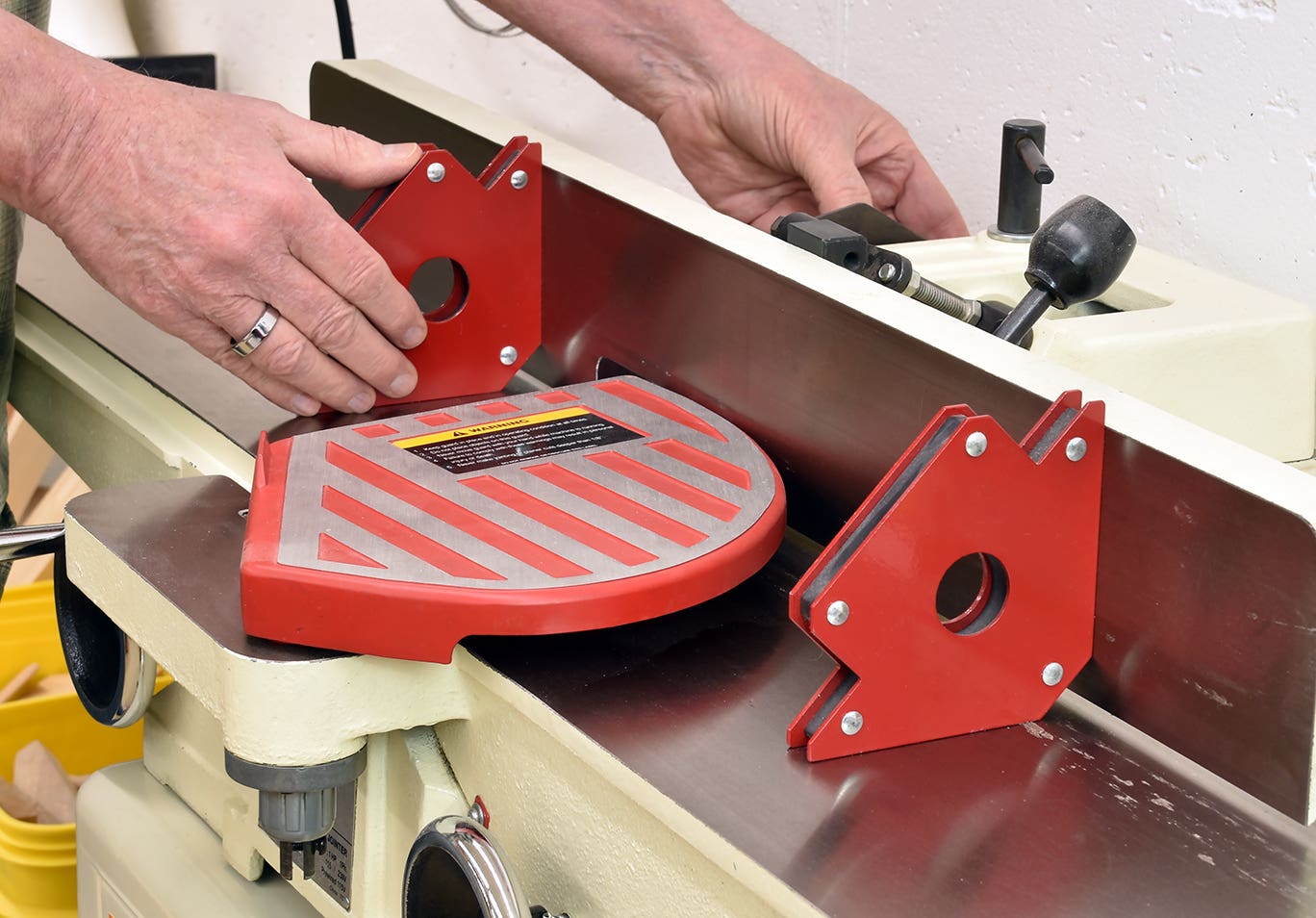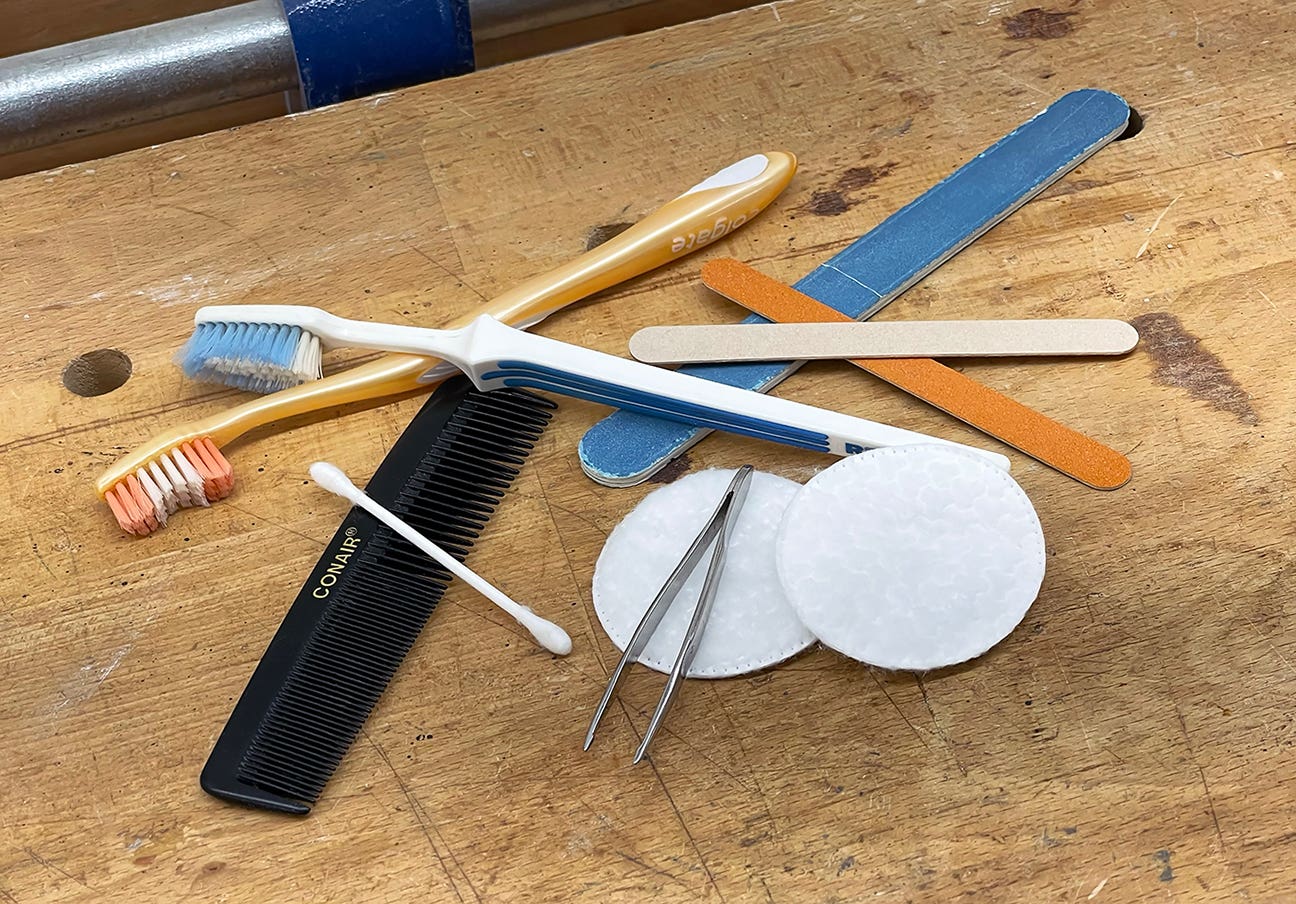Complexion depends on what you cook up
In many of the talks and classes that I give, we start with basics such as, “Why do we want to finish wood?” Protection is one of the two primary…
In many of the talks and classes that I give, we start with basics such as, "Why do we want to finish wood?" Protection is one of the two primary reasons. We want to protect it from factors that would change its nature from what we desire or have contributed to a state that we would not desire. That is, we don't want it to fall apart, rot, smell bad, change color in the wrong direction, collect dirt and grunge, or otherwise deteriorate or become less useful.
{loadposition position10}
We might also want to change the look of the wood. We might want to add shine, enhance depth, change color and alter the texture. We sometimes want to minimize natural variations, or hide or disguise what we feel are undesirable anomalies like mineral deposits or streaks, knots and the many forms of color variation.
The main coloring product that we use to alter - or sometimes preserve - the natural color of the wood is a stain or paint. Simply put, the differences are that the stain allows some of the existing color and pattern of the wood to show through the coating, while paint covers all of the color, including variations of color in the wood, the texture, depth and figure of the wood and could eliminate your ability to see other characteristics, such as the topography.
Both stains and paints can be made from two types of colorants. Simply stated, a colorant is any substance that can be added to another substance to change its color. For wood finishing, there are two basic colorant types: dye and pigment.
Pigments
Think of pigments as colored particles that are quite small in size, generally considered to range from fine sand to the finest powder or dust. Pigments can be suspended in a liquid medium in various proportions to form a stain, which applied to the wood will be distributed over the surface of the wood in varying concentrations. Where the pigments are more densely collected, the color will be stronger and more opaque. Where the pigments are more sparsely distributed, the color will not be as intense and the appearance will be more transparent, allowing more of the underlying wood to be seen in terms of color, depth and figure.
If the wood has large open pores, more of the pigment will collect in those pores, accentuating them. If the wood has large sanding scratches, they may be similarly enhanced, though that's usually not a desired outcome. It is important to remember that the pigment does not dissolve in the liquid medium, but is suspended. If you put ground black pepper into water and agitate it, you have the pepper particles suspended in the liquid. If you pour the mixture through a coffee filter, you have clean water on one side and wet pepper particles on the other side. In a pigmented stain, the same principles apply. Over time, if the suspension is not kept agitated, the particles will either float to the top or settle to the bottom. In most pigmented stains, the particles will settle to the bottom and will sometimes pack quite solidly there.
Pigments tend to be stable, maintaining their color and opacity for long periods of time, even when exposed to corrosive, erosive or otherwise degrading elements, such as oxygen, acids, sunlight and humidity and temperature extremes. Many of the pigments we use are naturally occurring, such as oxides of metals, minerals, ores and clays, and many are synthesized in the modern laboratory. Some are billions of years old and, as we are able to determine, show little change over time.
In the form of paint, pigments provide the best protection for wood surfaces, keeping out light and heat. They lay on the surface of the substrate, penetrating only where there is room for the pigment particle to lodge, which is why fine pigments ground for use in good wood stains provide one look, whereas coarser pigments intended for paints will look muddy and less transparent.
If the liquid that the pigment is suspended in evaporates (remember the example of pepper in water), the pigment has little adhesion to the surface and may easily be wiped off. In paint, a large amount of the liquid medium is dissolved resin, a film-forming liquid that will become a solid when the solvent has evaporated and/or the resin has chemically cured.
In a pigmented stain, there is more solvent, less resin and less pigment, resulting in a very thin film (called binder, in this case); just enough to keep the pigment bonded to the substrate when the solvent evaporates. This binder might or might not further cure after drying, depending on the intended use of the stain.
Dyes
A dye may be available in powder form or granules, but must be dissolved in a solvent in order to be used as a stain. If you put salt in water and stir it up until there are no particles left, you have a solution. Pour this through a coffee filter and you have salt water on both sides of the filter. There are no particles larger than the salt molecule. The salt will not settle to the bottom or float to the top, although there are situations where the salt (or the dye) can come out of solution and precipitate onto surfaces.
Because the solution is entirely liquid, a dye stain can penetrate into an absorbent substrate, such as wood, coloring the wood fiber itself. Because there is no accumulation of opaque substance on the surface, the dye is transparent, allowing the depth, color, figure and other characteristics of the wood to remain visible. In fact, some characteristics might not be visible at all until a dye is applied to the wood.
A couple of notable examples are bird's-eye or quilted maple; the dye greatly accentuates the appearance of depth, making the bird's-eye figure seem to stand up like little volcanoes and giving the quilted figure a moiré effect.
Because the dye absorbs into the substrate, when the solvent evaporates, more dye can be applied without obscuring the depth and figure of the wood; you get a stronger color, without the hiding power, or opacity, of the pigment.
On the negative side, dyes are less permanent and less lightfast than pigments, and are more difficult to remove. They can react with other substances, such as residual acid catalyst in a conversion varnish, usually changing color in the reaction. n
Greg Williams can be reached at gregalwil@yahoo.com.
This article originally appeared in the February 2011 issue.







